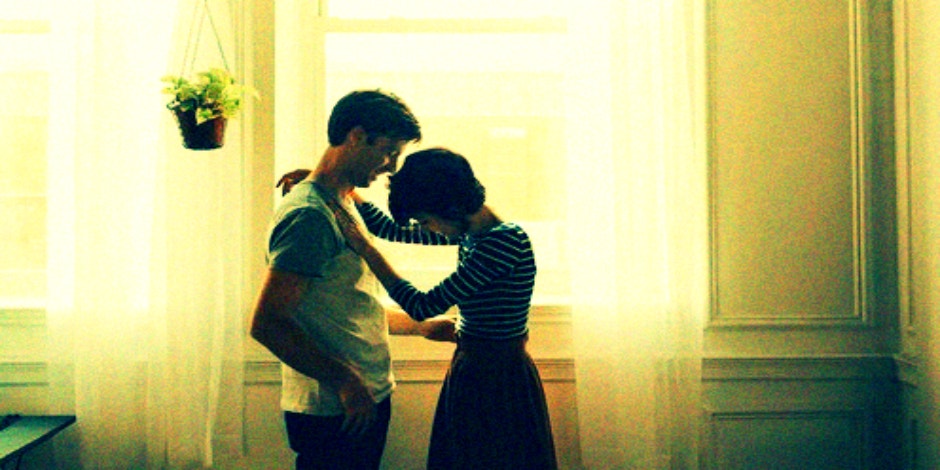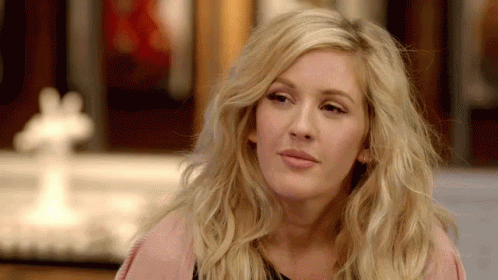Asexuality: Can Someone TRULY Live A Happy Life Without Sex?
Asexuality is controversial.
 weheartit
weheartit Quick: how many sexual orientations are there? Most people might answer three: heterosexual, homosexual, and bisexual. But a growing research literature suggests there’s a fourth (asexual) representing those feeling no sexual attraction to anyone ever.
Asexuality is controversial. Sexologists have not settled on a consensus definition. The orientation’s true prevalence remains unclear. And while some sexologists call it a psychosexual disorder, others insist it’s a normal variation and not a problem.

Tumblr
Plenty of people have little or no partner sex — those who lack partners; choose celibacy; have severely low libido; live in isolation; suffer medical or psychological conditions that preclude partner sex; or simply prefer to abstain. These individuals are able to feel erotic attraction to others, but they don’t act on it. They are non-sexual.
Asexuality is different. It goes beyond abstinence from partner sex to not feeling any sexual attraction to people of either gender.
The Asexual Visibility and Education Network (AVEN) uses these terms and definitions:
Asexual: someone who feels no sexual attraction to anyone. However, asexuals may experience other forms of interpersonal magnetism, including:
- Aesthetic attraction: feeling drawn to another based on appearance
- Romantic attraction: a desire for love and intimacy apart from sex
- Sensual attraction: a desire for affectionate touch but not erotic play
- Gray-sexual: someone who occupies the gray area between sexual and asexual (Gray-sexuals occasionally feel erotic attraction, but rarely.)
- Demisexual: someone who experiences sexual attraction only after a firm friendship or romantic bond has been established
Some sexologists reserve the term “asexual” for those who have never in their entire lives felt sexual attraction for anyone. Others say that chronic low libido — what the Diagnostic and Statistical Manual (DSM), the handbook of psychological conditions, once called “hypoactive sexual desire disorder” (it has since dropped the term) — qualifies as asexuality. AVEN says that people must decide for themselves if they are sexual, demi-sexual, gray-sexual, or asexual.
Voluntary celibacy, such as the erotic restrictions associated with Catholic priesthood, applies to both masturbation and partner sex. But many asexuals do masturbate, particularly men. They just don’t have partner sex. Asexuals feel no interpersonal sexual attraction, but that’s not a factor in solo sex.
Asexuality is different from sexual aversion, which involves debilitating anxiety about partner sex, or disgust or revulsion at the thought of it. Asexuals don’t suffer aversion; they’re simply not interested.
Researchers have wired the genitals of sexual, sex-averse, and asexual individuals and showed them erotic videos. Heterosexuals and homosexuals became aroused when they viewed opposite-sex or same-sex videos. Those with sexual aversion reacted negatively to X-rated media. Asexuals remained neutral.

Tenor
So, how many people are asexual?
Sexologists first described asexuality in the late-1970s, but only in the past 25 years have they estimated its prevalence:
- In 1991, English researchers surveyed 13,765 UK residents ages 16 to 44 and found that 0.9 percent had never had partner sex.
- In 2004, another English team surveyed 18,000 UK residents ages 16 to 59 and found that 1.05 percent said they’d never felt sexually attracted to anyone.
- In 2001, the English scientists who’d conducted the 1991 study did another one involving 12,110 people, and 0.4 percent claimed lifelong sexual abstinence.
- In 2010, U.S. researchers asked 12,571 Americans about sexual attraction and found that 0.8 percent of the women, and 0.7 percent of the men, said they were not sure if they’d ever experienced any.
It appears that somewhere between 0.5 and 1 percent of the population — one person in 100 to 200 — may consider themselves to be asexual.

Tumblr
Plenty of people in couples have little or no sex — sex is not necessary for functional long-term attachment. Compared with the general population, asexuals are more likely to be single, but depending on the study being cited, 15 to 33 percent of asexuals are cohabitating or married either in straight or gay relationships. AVEN says that asexuals can have successful long-term relationships without sex if the partners share aesthetic, romantic, and sensual attraction.
Meanwhile, many asexuals in relationships have sex with their partner to satisfy the spouse’s needs and to affirm the intimacy of the relationship. Some go through the motions, while others may participate enthusiastically, although they feel no desire for the sex.

PerezHilton
It’s not clear if asexuality is innate or acquired. Some asexuals insist they were born that way. Others have engaged in partner sex but, compared with the general population, played fewer childhood sex games (e.g., spin the bottle), became sexual later in life (in one study, average first intercourse was at age 20.6), had fewer sexual relationships, and had less sex within those relationships.
Not surprisingly, asexuals, particularly women, report disproportionately high rates of sexual problems and less sexual satisfaction. But asexual men suffer erection difficulties on a par with sexual men.

Twitter
Early sex researchers — Alfred Kinsey in the 1950s, and Masters and Johnson in the 1960s — assumed that everyone was sexual. In the 1990s, sexologists began focusing on desire and realized that some people had little or none.
Since they viewed desire as “normal,” therefore the lack of desire had to be “abnormal.” This was reflected in the DSM of the day, which included detailed descriptions of “sexual aversion disorder” and “hypoactive female desire disorder."
But the latest edition of the guide, DSM-5, has deleted these two “disorders,” incorporating them into more general discussions of desire and arousal issues. Some sexologists, and much of the general public, still considers a total lack of erotic interest to be abnormal, but the clear trend is toward seeing it as non-pathological, with sexual orientation expanding from three categories to at least four — heterosexual, homosexual, bisexual, and asexual.

Tumblr
Most asexuals feel fine about themselves. The problem is other people’s reactions to them. Recently, a 25-year-old asexual woman wrote to the “Dear Abby” column complaining about being misunderstood.
“When I 'come out' to people, they want to know what’s wrong with me. Is it a hormonal imbalance? Was I molested? Am I secretly gay? No, no, and no. And they often make rude or vulgar comments. One man even suggested that sex with him would ‘fix’ me.”
"Abby," to the column's credit, was supportive: “Don’t become defensive when people make ignorant comments.”
.......
Journalist/sex counselor Michael Castleman has covered sexuality, sex research, and sex therapy for 40+ years. Here on GreatSexGuidance, you can ask Michael Castleman anything you want for free, or search the Question and Answer Archives, his blogs, and more than 100 Great Sex Guidance articles to learn more about sex and enjoy more satisfying lovemaking.

